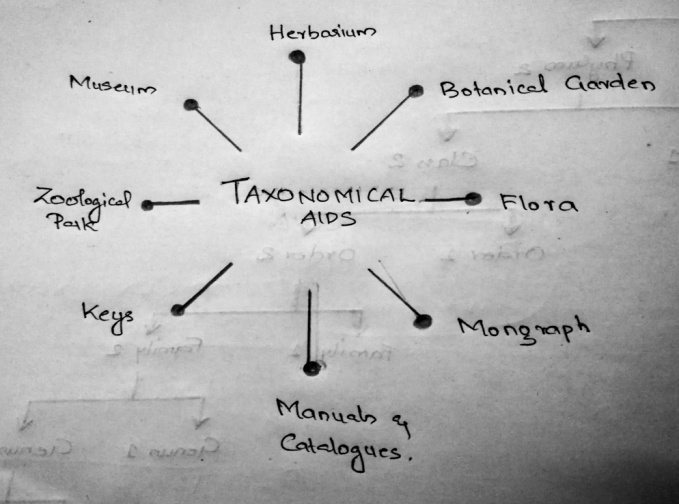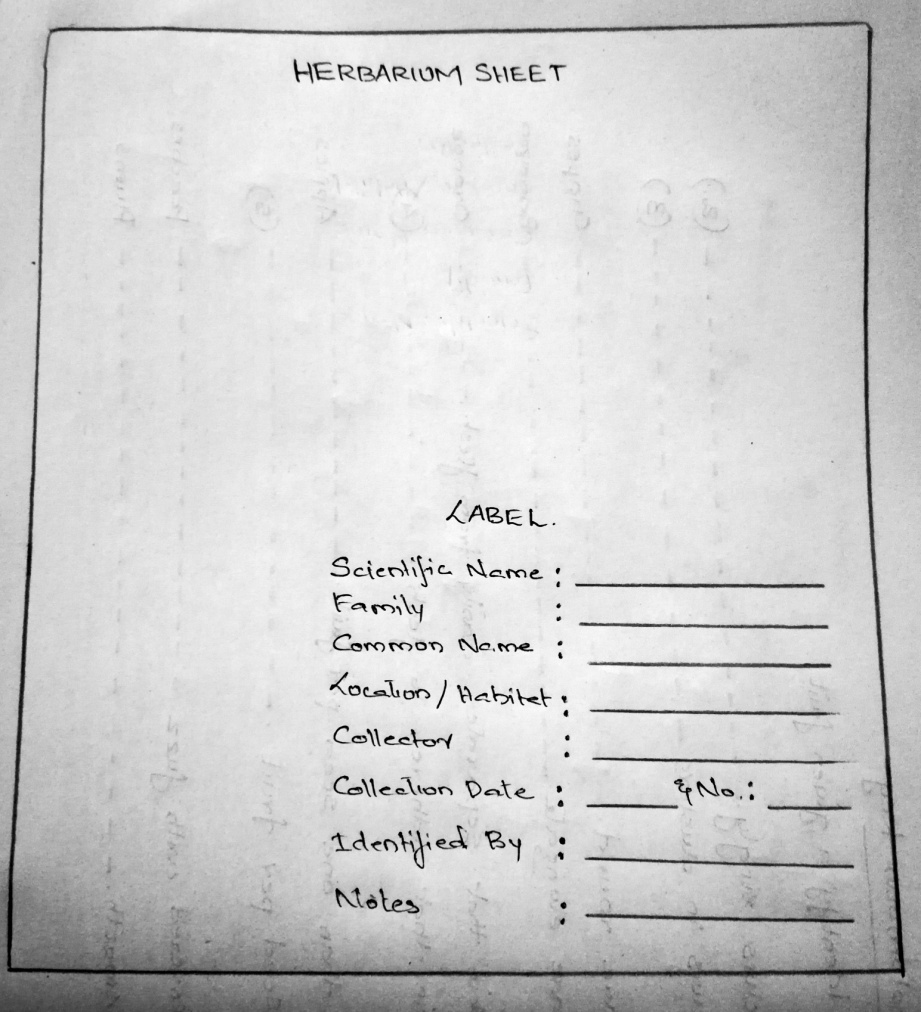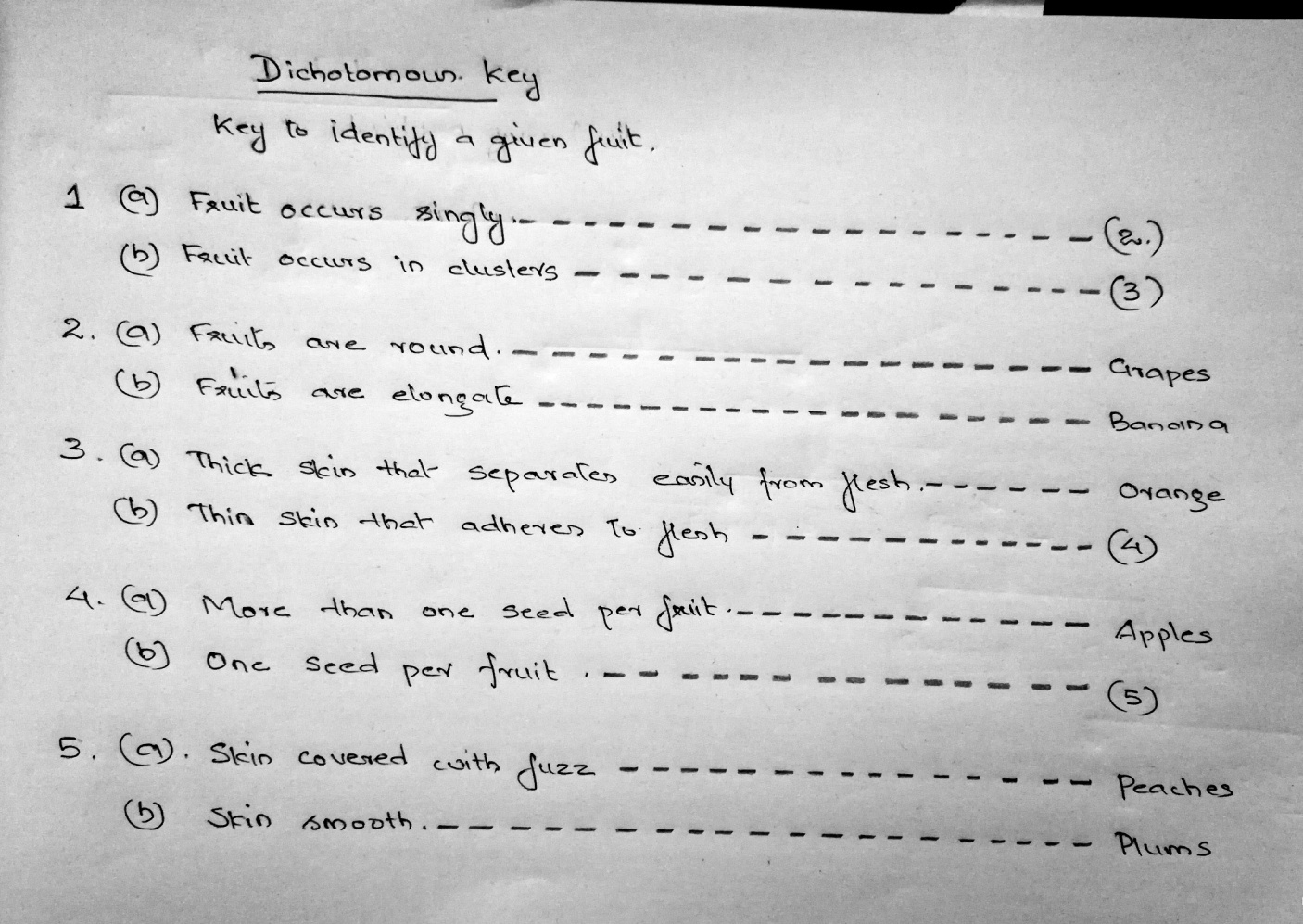Taxonomic aids refer to the stored specimens, materials and other information sources that can help in the identification and classification of an unknown organism.
During taxonomic studies, the original specimens of plants, animals and other organisms are gathered, stored and preserved, along with detailed information including its characteristic features. Live specimens stored in Botanical gardens and Zoological parks. These information forms the primary source of data for future studies in taxonomy, and form the basic requirement for training in systematics.
The most important taxonomic aids are:
- Herbarium
- Botanical Garden
- Museum
- Zoological Park
- Keys

Herbarium
Herbarium is a repository of preserved plant specimens. Whole plants, branches, flowers or other parts are dried and pressed to make it thin. They are then pasted on special taxonomic sheets known as herbarium sheets. These sheets can be used for quick reference of plant specimens.
Details of collection are recorded on the sheets. Data labeled include:
- Date & Place of Collection
- English, Local & Botanical Name
- Name of the Family
- Habitat of the plant
- Field notes
- Collector Name

Botanical gardens
A botanical garden is a place where plants are grown and displayed for the purposes of research and education. These collections of plants are used as reference for identification. Each plant is labelled with their scientific name and family.
Some famous botanical gardens in India:
- Indian Botanical Garden, Howrah, Calcutta
- National Botanical Research Institute, Lucknow
- Garden of Medicinal Plants, North Bengal University, West Bengal
Museums
Museums are places where preserved plant and animal specimens are kept for study and reference. They are set up in educational institutes also. Specimens are preserved in containers and jars in preservative solutions. Dry specimens of plants and animals are also kept in the museum. Insects are kept in insect boxes after collecting, killing and pinning. Large animals are stuffed and preserved. Skeletons of animals are also preserved in museums.
Zoological Parks
Zoological parks (called Zoo in common) are places where wild animals are kept under human protection. The environment around them is maintained similar to their natural habitat. Zoos provide opportunity for studying the behavior and food habits of the animals.
Key
A taxonomic key is a device that scientists use to identify an unknown organism, based on the similarities and dissimilarities. The key is made up of a number of question couplets. Each couplet refers two contrastic characters. You can choose one option from the couplet; it will lead you to another couplet. At the end of the key, the organism is identified.
Each statement in the key is known as a lead. There are separate taxonomic keys for each taxonomic category like family, genus and species.
Other taxonomic aids include Flora, manuals, monographs, and catalogues. Manuals provide a list of various species present in a given area. Monographs contain complete taxonomical information on a particular taxon.
